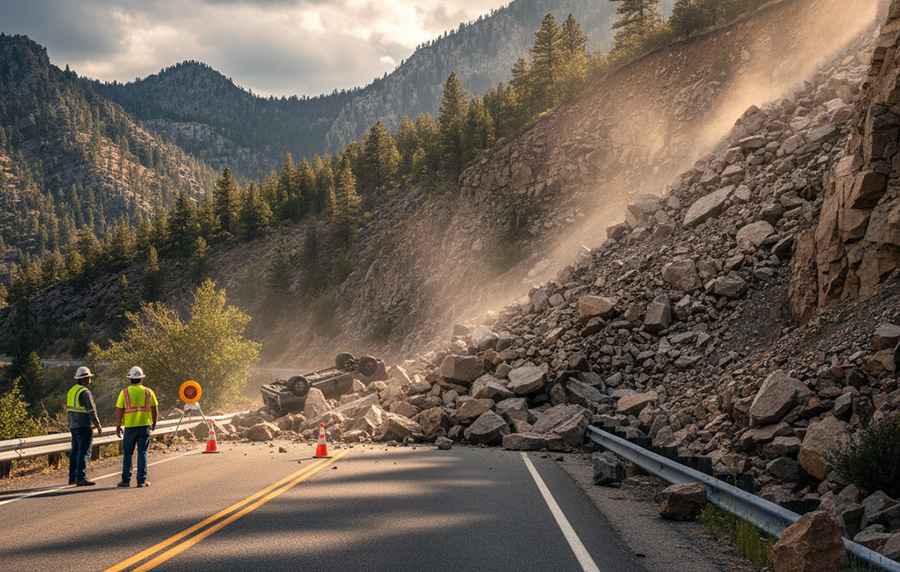Exploring Dangerous Roads: 5 Common Emergencies to Prepare For
Roads can flip on you fast. Sun in the morning, rocks falling in the afternoon. A cliff drive that looked exciting turns into “wait… where’s the road gone?” Doesn’t matter if it’s a back road near home or something wild like Bolivia’s infamous Death Road – if the road looks more challenging, you’ll want to be prepared for it.

1. Vehicle Breakdowns
Cars pick their moment. And usually it’s the worst possible one. You’re miles from help, no shops, no gas, and of course, the signal’s gone. In the city, it’s annoying. On a mountain road, it’s a whole different level of bad. Weather rolls in, the dark gets dark fast, and if you’re lucky, the only company you’ve got is your own snacks.
How to prepare:
- Get the boring checks done before you go – oil, tires, brakes.
- Throw in an emergency kit. Jumper cables, flashlight, duct tape.
- Pack some water and food. A two-hour wait on a city street feels long; out here, it feels endless.
2. Severe Weather
The weather doesn’t warn you properly. Fog is fine until it’s not—you blink and the road’s gone. Snow shows up faster than the app promised. And floods? You’ll be sitting in the driver’s seat, thinking your car needed paddles.
How to prepare:
- Extra layers and a blanket. Even if you think you won’t need it, throw it in.
- Offline maps, always. Service drops out right when you need it most.
- Keep more fuel than you think you’ll need. Detours and bad weather always chew through it.
3. Navigation Failures and Loss of Cell Service
GPS is great, sure… until it isn’t. You’re cruising along, it says “turn left,” and you’re staring at a goat track. Or maybe the screen freezes, the signal dies, and you just sit there tapping the phone like that’s going to help. (It won’t.) Out on backroads or mountain passes, tech only works if there’s a tower nearby. Most of the time, there isn’t.
How to prepare:
- Pack a paper map. Yep, the old-school kind that folds up badly and never goes back the same way. Still handy though.
- Let somebody know where you’re going and when you thinkyou’ll be back. Plans change, but at least someone’s got a rough idea.
- Pick up an eSIM data plan if you’re planning to travel abroad. Work out your data needs with the mobile data usage calculator before you head out — maps, music, online calls.
4. Rockfalls and Landslides
Some roads cut straight through mountains like they’re showing off – gorgeous views, but also prone to rockfalls. The statistics reveal that between 25 and 50 people lose their lives to landslides each year in the US. One unexpected slide can block your way forward or back.
How to prepare:
- Check local advisories before you drive. If heavy rain’s been falling, assume the slopes are unstable.
- Don’t park under cliffs or prominent rock faces.
- Keep a shovel or folding tool in your trunk. Sometimes you really do need to dig yourself out (or at least clear enough to pass).
5. Medical Emergencies
Unfortunately, injuries happen. A twisted ankle from a roadside pit stop, a sudden allergic reaction, or even dehydration can turn a trip sour. On a dangerous road, medical help isn’t always minutes away.
How to prepare:
- Carry a compact first-aid kit (bandages, antiseptic, pain relievers, allergy meds).
- Learn basic first aid like CPR, wound cleaning, and the essentials.
- Save emergency numbers for the area you’re traveling in. They’re not always the same as back home.
Final Thoughts
Preparation doesn’t kill the fun, it’s just the boring-but-necessary bit that lets you actually enjoy it. So, pack the gear, sort your car, maybe glance at your data and maps. Then forget about it and drive. Because the point is the trip itself, not you second-guessing every bump in the road.